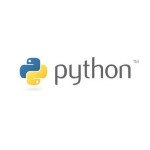Choosing the Right Programming Language for your backend
When it comes to frontend development, every developer knows there's one language to rule them all: JavaScript (HTML and CSS are not programming languages). But when it comes to building backend systems, there are several languages efficient enough to get the job done. In this relatively short post, I aim to suggest the best language to learn for a particular subset of backend systems, considering factors like scalability, security, and concurrency. That said: This advice is primarily based on trends in existing organizations, so there may be objections. If you have any, feel free to share them in the comments. Java If you're building a backend system where scalability and resilience are critical, I recommend using Java. These factors are why Java is widely adopted in large-scale enterprise systems. It has been thoroughly battle-tested, powering large systems for companies like Amazon, Google, and Spotify (serving millions of users daily). Python If you're building backend systems that need to integrate well with AI, data processing, or machine learning (such as recommendation systems or data collection services), I suggest using Python. Among the three main backend frameworks: Django: Best for enterprise adoption and scalability. Flask: Offers better integration with external libraries and tools (like TensorFlow and Matplotlib) compared to Django. FastAPI: Ideal for microservices and distributed systems due to its speed and support for asynchronous programming. If you're a data scientist looking to create web applications, consider trying out Streamlit, which simplifies the process. JavaScript/TypeScript If you're building systems where the frontend and backend are closely coupled, TypeScript is a great option. Additionally, if you need to build and deploy something quickly (like an MVP), frameworks like Next.js, Astro, or SvelteKit are excellent choices. Frontend web developers often lean toward this option due to their familiarity with JavaScript/TypeScript from building frontend systems. C-Sharp If you're building systems where security is a top priority, consider using C#. Financial applications and banking systems commonly rely on C# for their backends due to its robust security features, such as secure type safety and a wealth of libraries for cryptographic operations. Rust/Go Go: Ideal for scalable microservices systems thanks to its efficient concurrency model and simplicity. Rust: Best suited for systems requiring low-level control and where performance and memory safety are critical. If you're new to backend web development and unsure which language to choose, I hope this post provides some guidance.

When it comes to frontend development, every developer knows there's one language to rule them all: JavaScript (HTML and CSS are not programming languages). But when it comes to building backend systems, there are several languages efficient enough to get the job done.
In this relatively short post, I aim to suggest the best language to learn for a particular subset of backend systems, considering factors like scalability, security, and concurrency. That said:
This advice is primarily based on trends in existing organizations, so there may be objections. If you have any, feel free to share them in the comments.
Java
If you're building a backend system where scalability and resilience are critical, I recommend using Java. These factors are why Java is widely adopted in large-scale enterprise systems. It has been thoroughly battle-tested, powering large systems for companies like Amazon, Google, and Spotify (serving millions of users daily).
Python
If you're building backend systems that need to integrate well with AI, data processing, or machine learning (such as recommendation systems or data collection services), I suggest using Python.
Among the three main backend frameworks:
- Django: Best for enterprise adoption and scalability.
- Flask: Offers better integration with external libraries and tools (like TensorFlow and Matplotlib) compared to Django.
- FastAPI: Ideal for microservices and distributed systems due to its speed and support for asynchronous programming.
If you're a data scientist looking to create web applications, consider trying out Streamlit, which simplifies the process.
JavaScript/TypeScript
If you're building systems where the frontend and backend are closely coupled, TypeScript is a great option. Additionally, if you need to build and deploy something quickly (like an MVP), frameworks like Next.js, Astro, or SvelteKit are excellent choices.
Frontend web developers often lean toward this option due to their familiarity with JavaScript/TypeScript from building frontend systems.
C-Sharp
If you're building systems where security is a top priority, consider using C#. Financial applications and banking systems commonly rely on C# for their backends due to its robust security features, such as secure type safety and a wealth of libraries for cryptographic operations.
Rust/Go
- Go: Ideal for scalable microservices systems thanks to its efficient concurrency model and simplicity.
- Rust: Best suited for systems requiring low-level control and where performance and memory safety are critical.
If you're new to backend web development and unsure which language to choose, I hope this post provides some guidance.
What's Your Reaction?




























